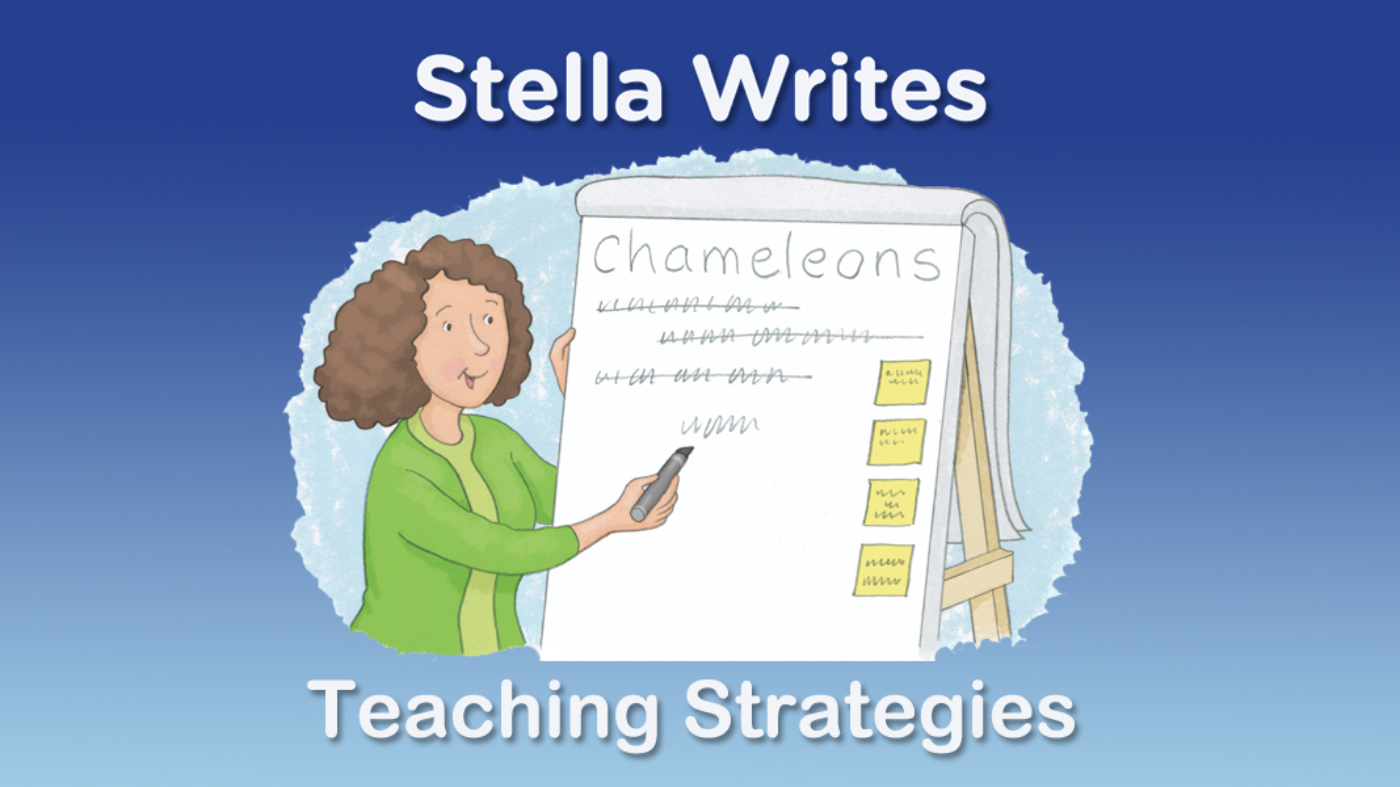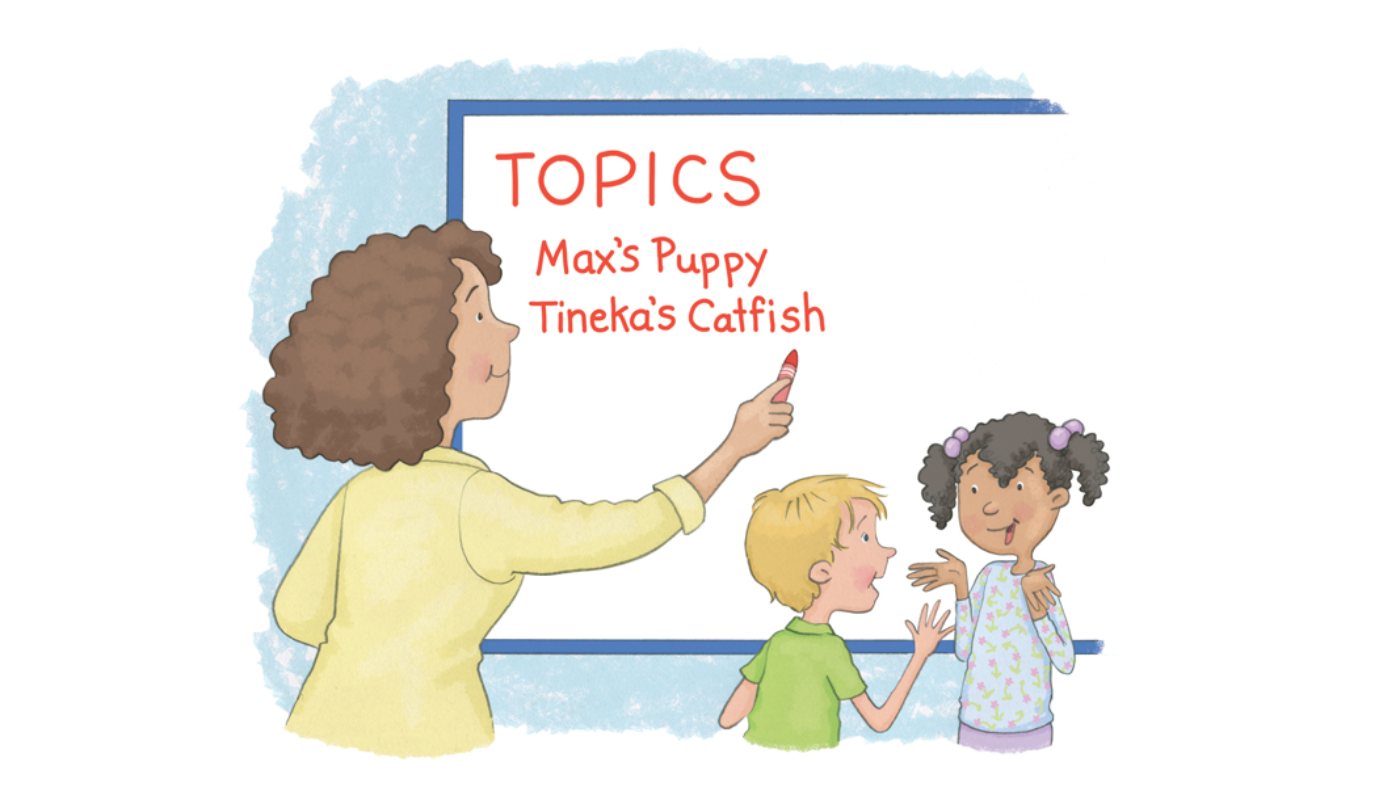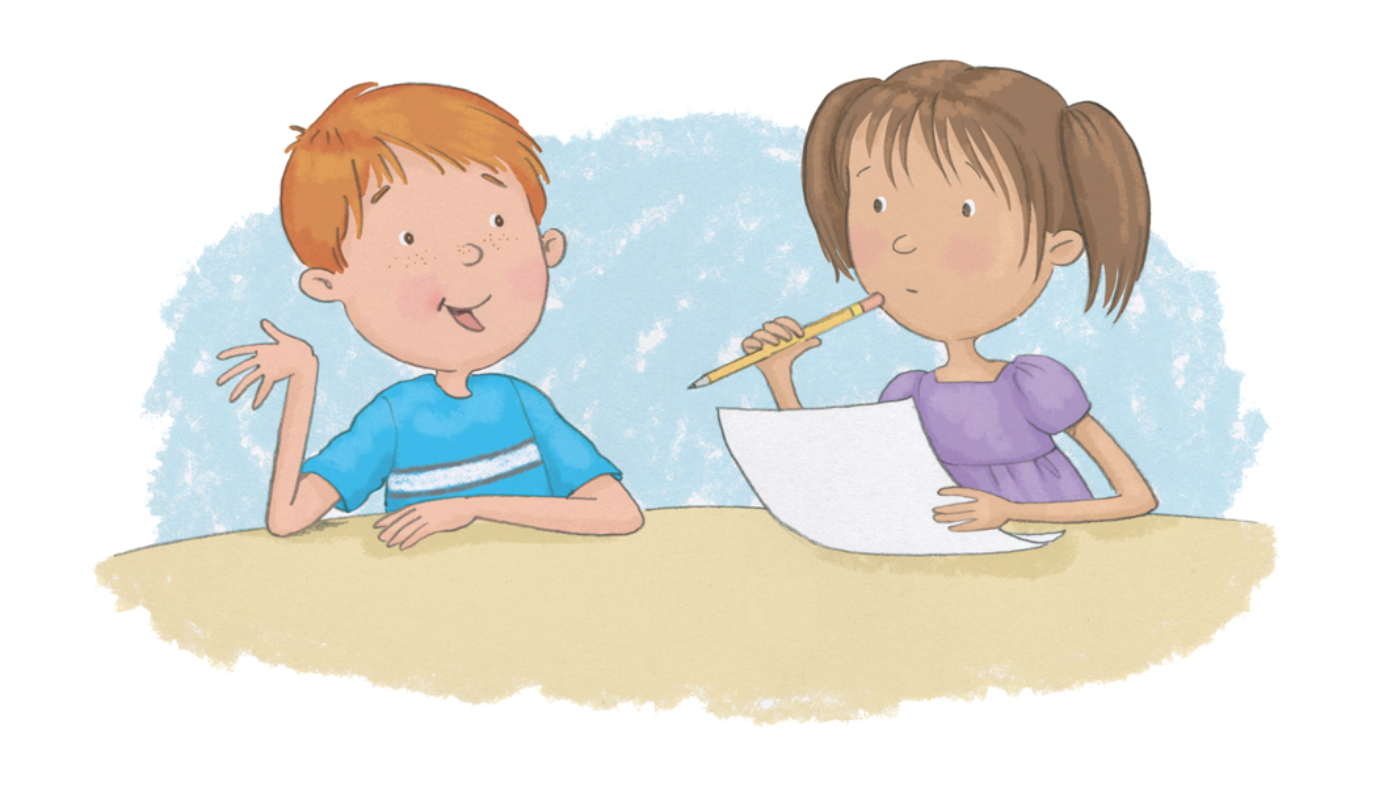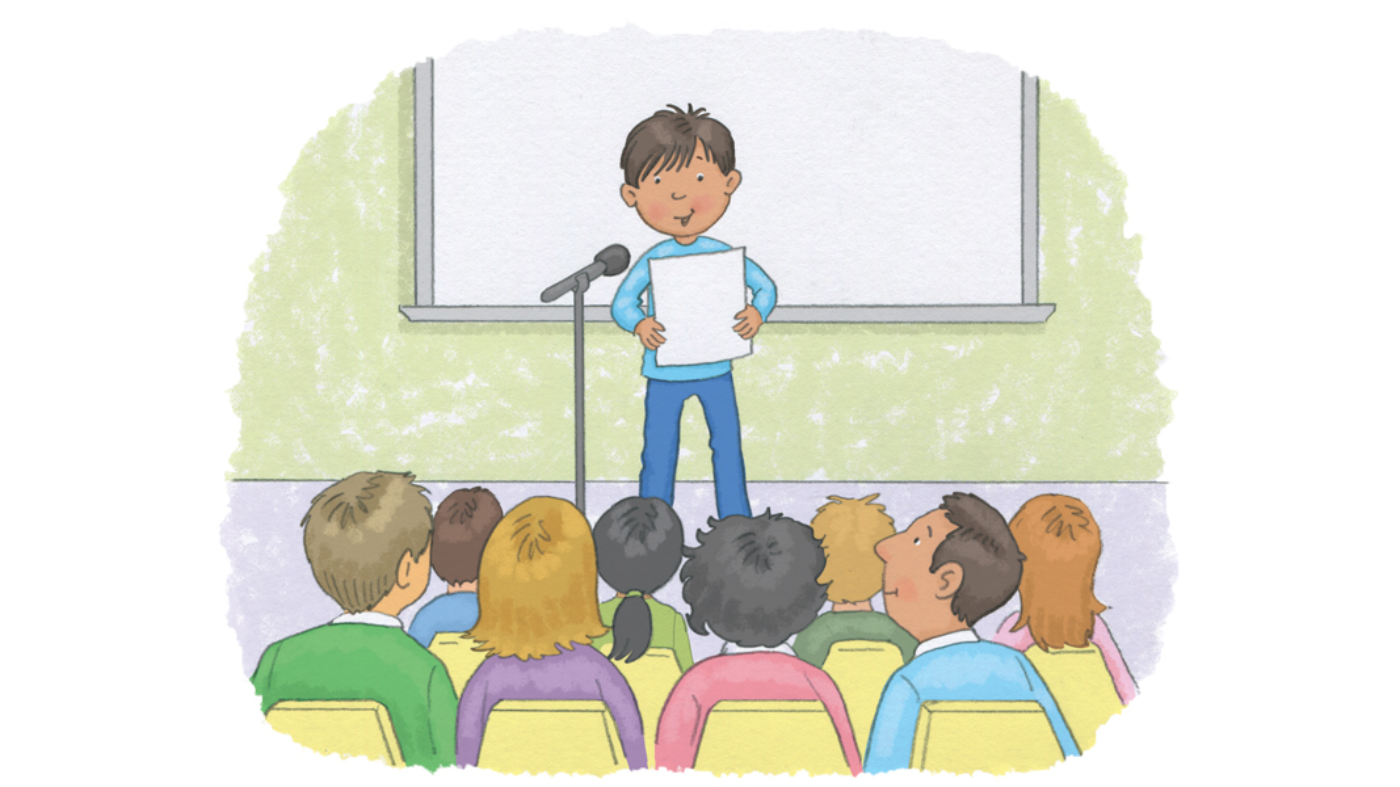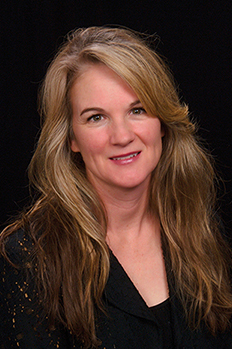“Writing is a messy process!” (Stella and Class: Information Experts)
Writing Is Work
Writing is work, but it can be a joyous, all-consuming experience. Just watch as engaged writers in your classroom shut out everything going on around them for inconceivably long stretches as their words tumble out onto the page.
Still, you can’t be “in the zone” every day. All writers struggle or feel frustrated at times. When you see students struggling, revisit sections of the Stella books to let them know the effort is natural.
“See, Stella couldn’t think of a conclusion that she liked for her opinion. She tried a couple of different ideas, but they didn’t work. That must have been frustrating! So, she left the writing for a bit, thought about it overnight, and came up with something she liked the next day! This is a good strategy to use when you are feeling really stuck. Leave that piece and work on something else for a while, just like Stella did.” (Stella Writes an Opinion)
Writers Persevere
Stella is a model of stamina and grit. Study those moments in the Stella books with your students. Read the text closely, and ask:
“This second ending is way, way better. It makes me feel proud. I love it!” (Stella Tells Her Story)
Writers Have Readers
Writers are readers. They read to find inspiration, ideas, and information. Writers also have readers—not the audience for the finished product, but readers of the work-in-progress.
Many professional writers have editors to help them revise and polish their work, and we teachers know how important it is for our budding writers to get feedback along the way. Model responding to drafts and list example phrases students can use to respond thoughtfully and respectfully to peers. Put in place structures, like pair-shares, peer conferencing checklists, and informal response groups, so students can get and give feedback.
Of course, it’s not easy to share a partially finished piece, and students need to learn to be open to feedback. If students have trouble listening to and utilizing feedback, remind them how important being open-minded can be. In Stella Tells Her Story, Stella carefully reflects on feedback from her classmates, and takes her teacher’s suggestion that she “might want to consider doing more with the ending” to heart.
When students give one another feedback, ask for examples of revisions made and share these aloud or on the board. Evaluate: “Is the writing better? What did the writer do to make it stronger?”
One important point here: Always remind writers they are in charge of their own writing. Just because a peer gives them a suggestion doesn’t mean they must make a change. In the end, writers must learn to evaluate feedback and decide whether or not changes are warranted. Not only is this the higher-level thinking we strive for, it shows students we honor their writing and their choices.
“Well, I helped myself. I made a list, like good writers sometimes do.” (Stella Writes an Opinion)
